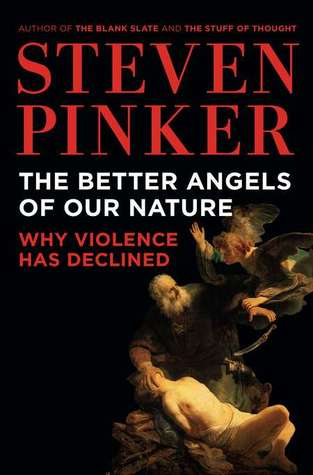The Violent Past of Otzi and Kennewick Man
In 1991 two hikers stumbled upon a corpse poking out of a melting glacier in the Tyrolean Alps. Thinking that it was the victim of a skiing accident, rescue workers jackhammered the body out of the ice, damaging his thigh and his backpack in the process. Only when an archaeologist spotted a Neolithic copper ax did people realize that the man was five thousand years old.2
Ötzi the Iceman, as he is now called, became a celebrity. He appeared on the cover of Time magazine and has been the subject of many books, documentaries, and articles. Not since Mel Brooks’s 2000 Year Old Man (“I have more than 42,000 children and not one comes to visit me”) has a kilogenarian had so much to tell us about the past. Ötzi lived during the crucial transition in human prehistory when agriculture was replacing hunting and gathering, and tools were first made of metal rather than stone. Together with his ax and backpack, he carried a quiver of fletched arrows, a wood-handled dagger, and an ember wrapped in bark, part of an elaborate fire-starting kit. He wore a bearskin cap with a leather chinstrap, leggings sewn from animal hide, and waterproof snowshoes made from leather and twine and insulated with grass. He had tattoos on his arthritic joints, possibly a sign of acupuncture, and carried mushrooms with medicinal properties.
Ten years after the Iceman was discovered, a team of radiologists made a startling discovery: Ötzi had an arrowhead embedded in his shoulder. He had not fallen in a crevasse and frozen to death, as scientists had originally surmised; he had been murdered. As his body was examined by the the CSI Neolithic team, the outlines of the crime came into view. Ötzi had unhealed cuts on his hands and wounds on his head and chest. DNA analyses found traces of blood from two other people on one of his arrowheads, blood from a third on his dagger, and blood from a fourth on his cape. According to one reconstruction, Ötzi belonged to a raiding party that clashed with a neighboring tribe. He killed a man with an arrow, retrieved it, killed another man, retrieved the arrow again, and carried a wounded comrade on his back before fending off an attack and being felled by an arrow himself.
Ötzi is not the only millennia-old man who became a scientific celebrity at the end of the 20th century. In 1996 spectators at a hydroplane race in Kennewick, Washington, noticed some bones poking out of a bank of the Columbia River. Archaeologists soon recovered the skeleton of a man who had lived 9,400 years ago.3 Kennewick Man quickly became the object of highly publicized legal and scientific battles. Several Native American tribes fought for custody of the skeleton and the right to bury it according to their traditions, but a federal court rejected their claims, noting that no human culture has ever been in continuous existence for nine millennia. When the scientific studies resumed, anthropologists were intrigued to learn that Kennewick Man was anatomically very different from today’s Native Americans. One report argued that he had European features; another that he matched the Ainu, the aboriginal inhabitants of Japan. Either possibility would imply that the Americas had been peopled by several independent migrations, contradicting DNA evidence suggesting that Native Americans are descendants of a single group of migrants from Siberia.
[...]
What is it about the ancients that they couldn’t leave us an interesting corpse without resorting to foul play? Some cases may have an innocent explanation based in taphonomy, the processes by which bodies are preserved over long spans of time. Perhaps at the turn of the first millennium the only bodies that got dumped into bogs, there to be pickled for posterity, were those that had been ritually sacrificed. But with most of the bodies, we have no reason to think that they were preserved only because they had been murdered. Later we will look at the results of forensic investigations that can distinguish how an ancient body met its end from how it came down to us. For now, prehistoric remains convey the distinct impression that The Past is a place where a person had a high chance of coming to bodily harm.
Notes:
Folksonomies: history archaeology violence
Taxonomies:
/art and entertainment/celebrity fan and gossip (0.484427)
/science/social science/history/archaeology (0.433883)
/law, govt and politics/law enforcement/police (0.407723)
Keywords:
Kennewick Man (0.924406 (positive:0.215061)), Neolithic copper ax (0.790228 (neutral:0.000000)), elaborate fire-starting kit (0.763930 (neutral:0.000000)), CSI Neolithic team (0.747181 (neutral:0.000000)), Native American tribes (0.729510 (positive:0.261431)), Native Americans (0.711056 (positive:0.215061)), Old Man (0.667032 (neutral:0.000000)), Tyrolean Alps (0.657608 (neutral:0.000000)), millennia-old man (0.654077 (neutral:0.000000)), Violent Past (0.652588 (neutral:0.000000)), wood-handled dagger (0.651957 (neutral:0.000000)), rescue workers (0.650881 (neutral:0.000000)), fletched arrows (0.649737 (neutral:0.000000)), Ötzi (0.649131 (negative:-0.476665)), leather chinstrap (0.644867 (neutral:0.000000)), leggings sewn (0.643466 (negative:-0.239206)), bearskin cap (0.641035 (neutral:0.000000)), waterproof snowshoes (0.640764 (neutral:0.000000)), Time magazine (0.640039 (neutral:0.000000)), startling discovery (0.639901 (positive:0.559283)), arthritic joints (0.638816 (negative:-0.278716)), human prehistory (0.636178 (neutral:0.000000)), skiing accident (0.635382 (negative:-0.337770)), animal hide (0.634969 (negative:-0.239206)), crucial transition (0.634322 (neutral:0.000000)), Mel Brooks (0.632553 (neutral:0.000000)), raiding party (0.631978 (negative:-0.214499)), hydroplane race (0.631824 (neutral:0.000000)), unhealed cuts (0.630858 (negative:-0.738830)), medicinal properties (0.629789 (positive:0.339596))
Entities:
Ötzi:Person (0.751207 (negative:-0.438845)), Kennewick:StateOrCounty (0.568813 (positive:0.215061)), skiing:Sport (0.380009 (negative:-0.337770)), Time magazine:PrintMedia (0.358261 (neutral:0.000000)), Mel Brooks:Person (0.354704 (neutral:0.000000)), Tyrolean Alps:GeographicFeature (0.351025 (neutral:0.000000)), Native Americans:FieldTerminology (0.339940 (positive:0.215061)), Japan:Country (0.302287 (neutral:0.000000)), Columbia River:GeographicFeature (0.290233 (neutral:0.000000)), taphonomy:City (0.281650 (neutral:0.000000)), Americas:Continent (0.277698 (neutral:0.000000)), Siberia:Country (0.254829 (neutral:0.000000)), Washington:City (0.232734 (neutral:0.000000)), five thousand years:Quantity (0.232734 (neutral:0.000000)), 9,400 years:Quantity (0.232734 (neutral:0.000000)), 2000 Year:Quantity (0.232734 (neutral:0.000000)), Ten years:Quantity (0.232734 (neutral:0.000000))
Concepts:
Native Americans in the United States (0.949386): dbpedia | freebase | yago
Archaeology (0.924594): dbpedia | freebase | opencyc
Body (0.698743): dbpedia | freebase
Prehistory (0.695169): dbpedia | freebase | opencyc
Columbia River (0.679697): dbpedia | freebase | opencyc | yago
DNA (0.617555): website | dbpedia | freebase | yago
Human (0.584551): dbpedia | freebase | opencyc
Ötzi the Iceman (0.530786): geo | website | dbpedia | freebase | yago





